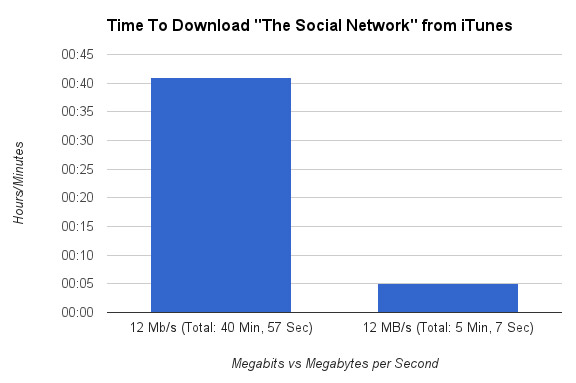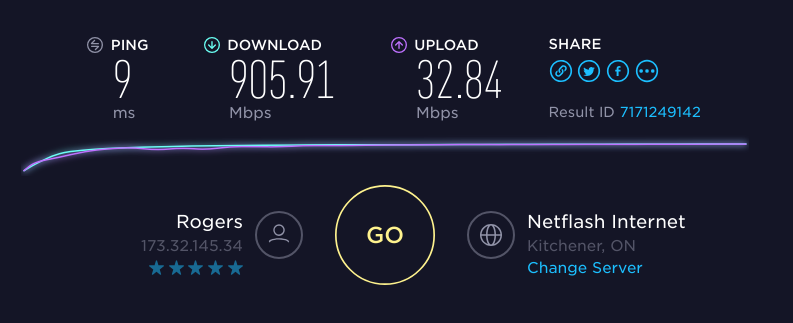The Future of Internet Speeds: Patterns in Megabits Per Second
The Future of Internet Speeds: Patterns in Megabits Per Second
Blog Article
Exactly How Megabits Per Second Influence Your Online Activities
The principle of megabits per second (Mbps) plays an essential role in shaping our online experiences. Higher Mbps can enhance efficiency and decrease disruptions, while inadequate speeds may cultivate stress and inefficiency.
Understanding Megabits Per Second
When taking into consideration internet speed, it's vital to understand the principle of megabits per second (Mbps), which offers as a basic measurement for data transfer rates. This statistics measures how much data can be transmitted over an internet link in one second, giving a clear understanding of efficiency capabilities - Megabits Per Second. For context, one megabit is equivalent to one million little bits, and Mbps is frequently made use of to reveal data transfer for numerous on-line tasks
A greater Mbps indicates a faster internet link, allowing customers to perform jobs such as downloading data, searching sites, and involving in on-line gaming extra effectively. For example, normal browsing calls for around 1-5 Mbps, while streaming high-definition video clip might demand 5-25 Mbps. Comprehending these demands is critical for establishing the suitable internet speed required for details tasks.
Furthermore, the number of gadgets attached to a network can impact total efficiency. Multiple customers streaming, video gaming, or downloading concurrently can stress offered data transfer, causing slower speeds - Megabits Per Second. Reviewing individual online habits and demands is crucial in choosing a web plan that lines up with one's needs, making sure a smooth digital experience
Streaming and Buffering Issues
Streaming high-def web content has actually become a staple of modern online entertainment, yet it is typically accompanied by irritating buffering issues. These interruptions can substantially diminish the watching experience, bring about frustration and potential loss of target market interaction. Buffering happens when the data transmitted from the streaming service is not received swiftly sufficient to maintain a smooth playback, frequently due to insufficient internet rate measured in megabits per second (Mbps)

Furthermore, real-time streaming can be affected by network blockage, which occurs when multiple tools share the same data transfer. Optimizing link rate and guaranteeing appropriate Mbps is vital for a seamless streaming experience. As streaming services proceed to progress, recognizing the influence of Mbps on buffering issues continues to be crucial for consumers looking for nonstop home entertainment.
Online Gaming Performance
The impact of net rate on on-line tasks prolongs past streaming, substantially affecting online gaming efficiency. In competitive video gaming, reduced latency and high transmission capacity are critical for a smooth experience. A rapid connection lessens lag, permitting players to react quickly to in-game occasions, which can be the difference between triumph and defeat.
Bandwidth, determined in megabits per second (Mbps), plays an essential function in sustaining several tools and video gaming systems simultaneously. Insufficient data transfer can result in dropped links or lowered game top quality, adversely affecting gameplay. On the internet multiplayer video games require considerable data transfer, especially during peak video gaming hours when various players are online.
Hectic first-person shooters demand greater speeds to preserve responsiveness, while turn-based strategy video games might operate moderately well on lower speeds. As on the internet pc gaming continues to develop, with raising visual integrity and more complicated multiplayer settings, the need for higher Mbps will just increase.
Video Conferencing Quality
In today's electronic landscape, video conferencing high quality is heavily affected by net speed, specifically in regards to data transfer and latency. Premium video clip Related Site calls call for adequate bandwidth to transmit audio and video clip data effortlessly. Usually, a minimum of 1.5 Mbps upload and download rates is suggested for typical definition video clip, while high-definition video conferencing generally demands at the very least 3 Mbps.
Latency, or the delay between sending and getting data, likewise plays a critical duty in the customer experience. Reduced latency makes sure that conversations flow normally without uncomfortable pauses or disruptions. Ideally, latency must be listed below 150 milliseconds for reliable communication. Higher latency can lead to echo, lag, and disjointed interactions, which can hinder collaboration and involvement during meetings.
In addition, multiple individuals in a video clip meeting can stress available bandwidth, requiring also greater rates. Network blockage, frequently caused by simultaneous tasks like streaming or downloading, can better deteriorate video quality. Thus, for organizations counting on video conferencing for remote collaboration, recognizing the relationship between megabits per second and general interaction quality is important for keeping efficiency and boosting online communications.
Selecting the Right Internet Plan
Choosing an appropriate net strategy is crucial for ensuring ideal performance in numerous on-line tasks, particularly in setups that demand high data transfer, such as video clip conferencing and online gaming. Megabits Per Second. When considering an internet strategy, it is important to review both the speed and information allocation to match your details usage needs
For households with multiple users taking part in synchronised tasks, a strategy providing higher megabits per second (Mbps) is suggested. Typically, a minimum of 25 Mbps appropriates for typical streaming and browsing, while strategies going beyond 100 Mbps are better for more intensive jobs. Furthermore, consider the nature of your online activities; video conferencing calls for a minimum of 1.5 Mbps upload rate, while on the internet pc gaming might need a lower latency however constant connection.
It is also essential to examine your information cap. Endless information plans can prevent throttling and disruptions, particularly if heavy usage is expected. Lastly, research study solution companies Read Full Report in your location, as availability and pricing can vary. By thoughtfully picking a web strategy customized to your demands, you can enhance your on the internet experience, ensuring smooth, undisturbed access to your recommended tasks.
Final Thought
In conclusion, the value of megabits per second (Mbps) fit on the internet tasks can not be overstated. Higher Mbps helps with smooth streaming, lowers buffering, improves gaming experiences, and guarantees top quality video clip conferencing. Conversely, insufficient transmission capacity can result in aggravating interruptions and decreased More Info efficiency throughout numerous tasks. A detailed understanding of specific or family Mbps requirements is crucial for selecting an ideal web plan that sufficiently supports diverse online tasks and user needs.

Commonly, a minimum of 25 Mbps is appropriate for common streaming and surfing, while plans going beyond 100 Mbps are preferable for even more intensive tasks. Additionally, think about the nature of your online activities; video conferencing requires at least 1.5 Mbps post rate, while on-line gaming might need a lower latency however constant link.
Report this page